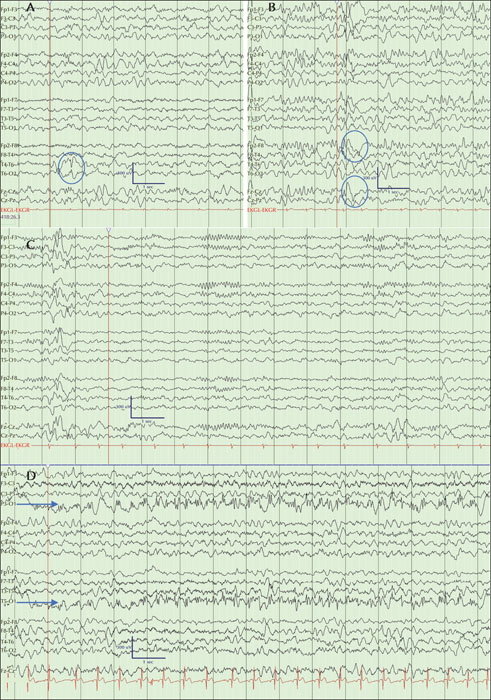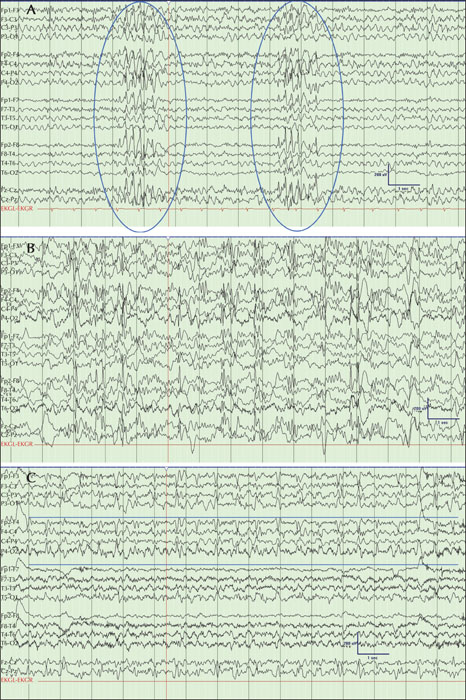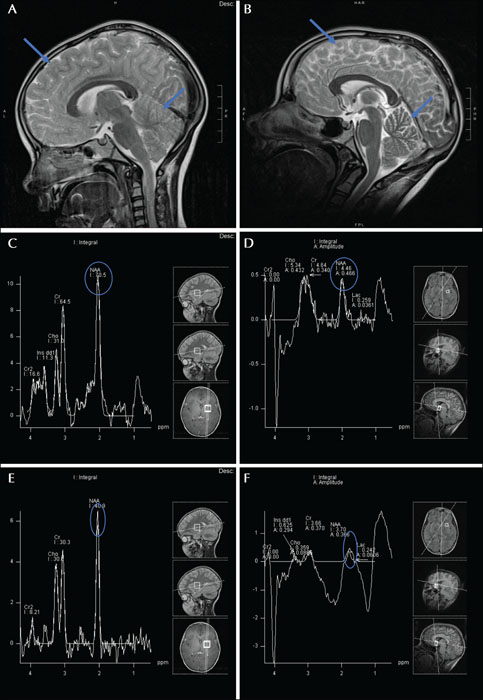Epileptic Disorders
MENUProgression of alternating hemiplegia of childhood-related focal epilepsy to electrical status epilepticus in sleep with reversible encephalopathy Volume 24, numéro 1, February 2022
- Mots-clés : ATP1A3, alternating hemiplegia of childhood, electrical status epilepticus in sleep, epileptic encephalopathy
- DOI : 10.1684/epd.2021.1377
- Page(s) : 183-90
- Année de parution : 2022
Mutations in the ATP1A3 gene (which encodes the main α subunit in neuronal Na+/K+-ATPases) cause various neurological syndromes including alternating hemiplegia of childhood. This rare disorder is characterized by paroxysmal episodes of hemiplegia, dystonia, oculomotor abnormalities, and occasionally developmental regression. Approximately 50% of alternating hemiplegia of childhood patients also have epilepsy, which is either focal or generalized. Seizures are often drug resistant. We report a 10-year-old girl with the D801N ATP1A3 mutation and alternating hemiplegia of childhood who manifested with drug-resistant focal seizures as an infant and throughout childhood. At the age of about10.5 years, her epilepsy evolved into electrical status epilepticus in sleep with generalized discharges. These changes coincided with developmental regression consistent with epileptic encephalopathy. Additionally, MRI and MR spectroscopy showed new cortical atrophy and markedly depressed N-acetyl aspartate peaks compared to previous normal studies. Electrical status epilepticus in sleep resolved after medication adjustments. She, now, only four months after her diagnosis of electrical status epilepticus in sleep, has regained most of the skills that were lost only a few months earlier. Our observations document that alternating hemiplegia of childhood can result in the above-described unique features; particularly, progression of focal epilepsy to electrical status epilepticus in sleep with generalized features and reversible epileptic encephalopathy.




